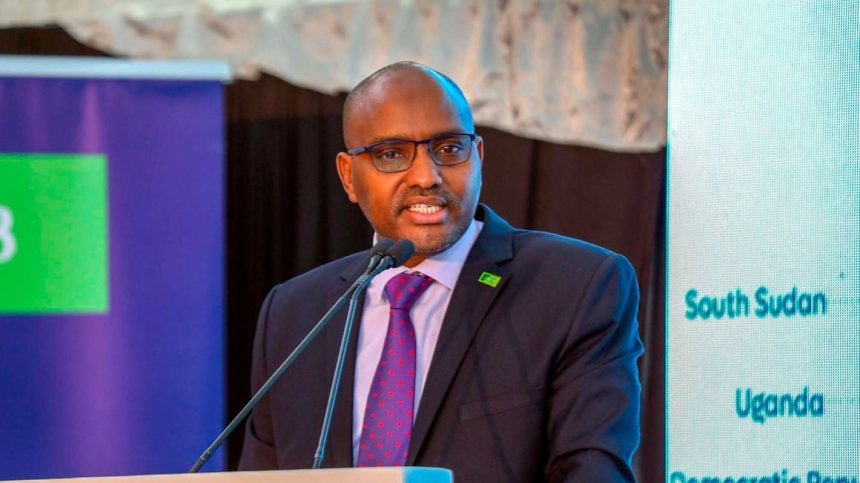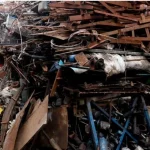The stock of bad loans in the banking sector has increased for the third straight month to hit a record Sh540.8 billion in March and extended their share in the total loan book to a 10-month high, taking the shine off the sector’s growing profits.
The gross non-performing loans (NPLs) ratio — the proportion of loans for which no interest or principal has been received for at least three months— hit 14.6 percent in April from 14 percent in February, pointing to a further rise in the stock of bad loans.
Read: Bad loans see biggest fall in 15 years on assets auctions
The latest NPL ratio is the highest since June last year when it was at 14.7 percent. Loan defaults had cooled to Sh487.7 billion in December last year but rose to close March at Sh540.8 billion—the record for the banking sector.
The mounting defaults have prompted top banks such as Equity, KCB, Co-operative Bank of Kenya, Stanbic Bank and I&M Bank to set aside more money for loan loss provisioning despite the sector’s pre-tax profits rising by 13.6 percent to Sh65.1 billion.
“Increases in NPLs were noted in the manufacturing, real estate, building and construction, and trade sectors. Banks have continued to make adequate provisions for the NPLs,” said the Central Bank of Kenya (CBK) in a monetary policy statement issued last week.
The Sh53.1 billion or 10.8 percent growth in NPLs at a time the loan book expanded by 4.8 percent to Sh3.85 trillion means the defaults have been rising at a faster pace than fresh loans.
The 39 banks, polled by the CBK in March, had said they were going to step up loan recoveries— usually through property seizures, auctions or private treaties— in a bid to cut the NPL ratio from the latest spike that contrasts with 13.3 percent in December.

“For the quarter ended June 30, 2023, banks expect to intensify their credit recovery efforts in eight economic sectors. The intensified recovery efforts are aimed at improving the overall quality of the asset portfolio,” said the CBK in the credit survey report up to March.
The major sectors being targeted by banks for loan recoveries include personal and household, trade, transport and communication, manufacturing, real estate and building and construction.
While 45 percent of banks polled by the CBK expect the level of NPLs to fall by June, 32 percent are predicting this to remain at the same level while 24 percent see a further spike happening.
The increased provisioning for loan defaults has cut the pace of growth in the first quarter pre-tax profits to 13.6 percent compared with a similar quarter last year when gross earnings jumped by 25 percent to Sh57.3 billion.
Banks last year posted a 25.3 percent rise in pre-tax profits to Sh244.1 billion. Equity Group saw a rise in provisioning for loan defaults to Sh1.85 billion in the first quarter of the year from Sh963 million in a similar quarter last year.
Stanbic hit Sh1.14 billion from Sh491.2 million as I&M raised its provisions by 78 percent to Sh1.34 billion.
KCB Group chief executive Paul Russo told shareholders at the recent annual general meeting that he had formed a special team to address NPLs, saying that most of the bad loans were related to several key names with legacy challenges.
KCB Bank Kenya closed March with an NPLs ratio of 19.7 percent from 16.4 percent in March last year while that of National Bank of Kenya—a wholly owned subsidiary of KCB Group— was at 23.2 percent compared with 33.8 percent in a similar period last year.
“There are legacy names but we have the job to deal with it. Our commitment is to make sure we confront the NPLs and bring the ratio to sub-10 percent,” said Mr Russo.
“The NPLs relate to legacy names. We have created a special team to handle those names. When we took over NBK, the NPL ratio was above 50 percent and we are now down to 23 percent. So we have the capabilities.”
Read: Three sectors account for 54pc of Kenyan banks’ bad loans
KCB Bank Kenya, which raised its first-quarter loan loss provisioning from Sh1.7 billion to Sh3.3 billion as gross NPLs jumped from Sh98.9 billion to Sh138.9 billion, said 23.1 percent of the stock of NPLs was from the manufacturing sector followed by real estate at 15.3 percent.
The group’s NPLs ratio per segment showed corporates led with a ratio of 33.5 percent, followed by mortgages at 19.7 percent and small and medium-sized enterprises at 9.6 percent.
The rising interest rate environment is expected to pile more pressure on the sector’s NPL book with customers expected to face difficulties in repaying loans at steeper rates.
Kenya Bankers Association (KBA) said in a recent note that slowed economic growth and elevated inflation were likely to hurt the NPLs ratio further.
“Going forward, expectations of a slowdown in economic growth and elevated inflationary pressures in 2023 are likely to further exacerbate credit risks and thus asset-quality deterioration,” said KBA in a note.
The CBK in March raised the benchmark lending rate to a five-year high of 9.5 percent from 8.75 percent as a counter-inflation measure, which set the stage for costlier loans. The regulator last week left the rate unchanged.



